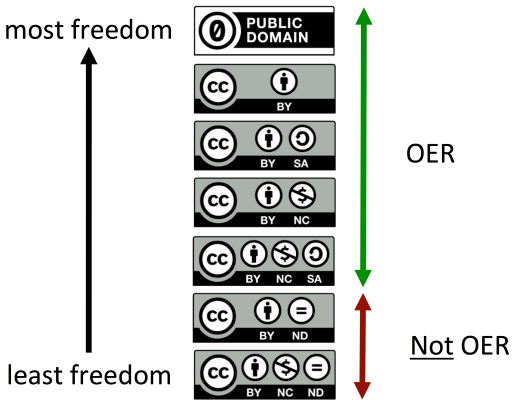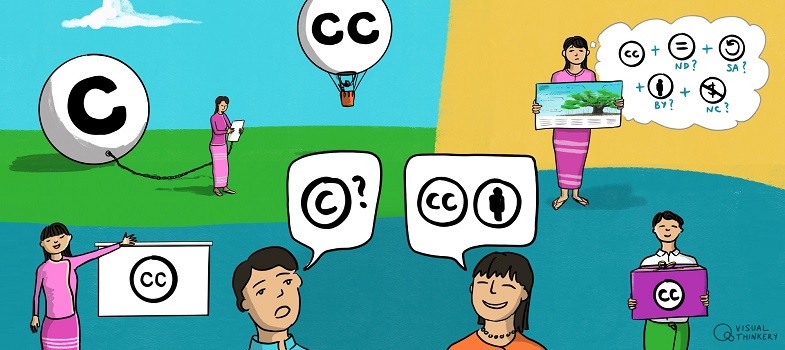Open educational resources (OER)
What makes open educational resources ‘open’? Let’s take a look at this definition from UNESCO:
‘Open educational resources (OER) are any type of educational materials that are in the public domain or introduced with an open licence. The nature of these open materials means that anyone can legally and freely copy, use, adapt and re-share them. OERs range from textbooks to curricula, syllabi, lecture notes, assignments, tests, projects, audio, video and animation.’ (UNESCO, n.d.)
As you can see, OER can take many different forms, from lecture notes to textbooks. They can be described as ‘open’ because the resources are available on an open licence or are in the public domain. However you can also see that resources are ‘open’ because ‘anyone can legally and freely copy, use, adapt and re-share them’.
Do all Creative Commons licences enable us to do all these things?
Another way of expressing the ‘openness’ of OER is David Wiley’s 5Rs. David Wiley is a key figure in the open education movement. The 5Rs is a series of rights that the creator of an OER gives to a user, including the right to:
- ‘retain’ a work (in other words, to keep a copy of it)
- ‘reuse’ material (without seeking permission, as you have already been granted this according the terms of the open licence that’s been applied to the resource)
- ‘revise’ the material (to make changes to a resource)
- ‘remix’ a resource (to combine the resource with other OER to make something new)
- ‘redistribute’ the openly licensed material (in other words, to share it with others).
(Here is Wiley’s original definition of the 5Rs.)
Not all education materials available under a CC licence are OER. The following figure details which CC licences work well for education resources and which do not. What CC licence types are described as ‘not OER’ and ‘least free’? Why do you think they have been described this way?

As you might have recognised, the two licence types that are described as ‘not OER’ and the ‘least free’ include the ‘ND’ or no-derivatives licence element. This is because the ND licence element prohibits you from making changes to a resource and then sharing it with others.
ND licences do not fulfil the UNESCO definition of OER because you cannot ‘adapt’ ND-licensed material that you want to share with others. ND-licensed resources do not meet the criteria of David Wiley’s 5Rs either because they do not grant the user permission to ‘remix’ and ‘revise’ a resource.
Choosing the right licence for your OER requires you to think about which permissions you want to give to other users, and which permissions you want to retain for yourself. Many open education advocates support the use of the CC BY licence for educational purposes because it grants the user the most permissions for reuse and reversioning. You can find out more about why CC BY in the additional resources section. We’ll also take a closer look in Sections 4.2 and 5.2 at what you need to consider when applying a CC licence to your own work and why it might be important to choose a licence that enables adaptation.
Introduction
